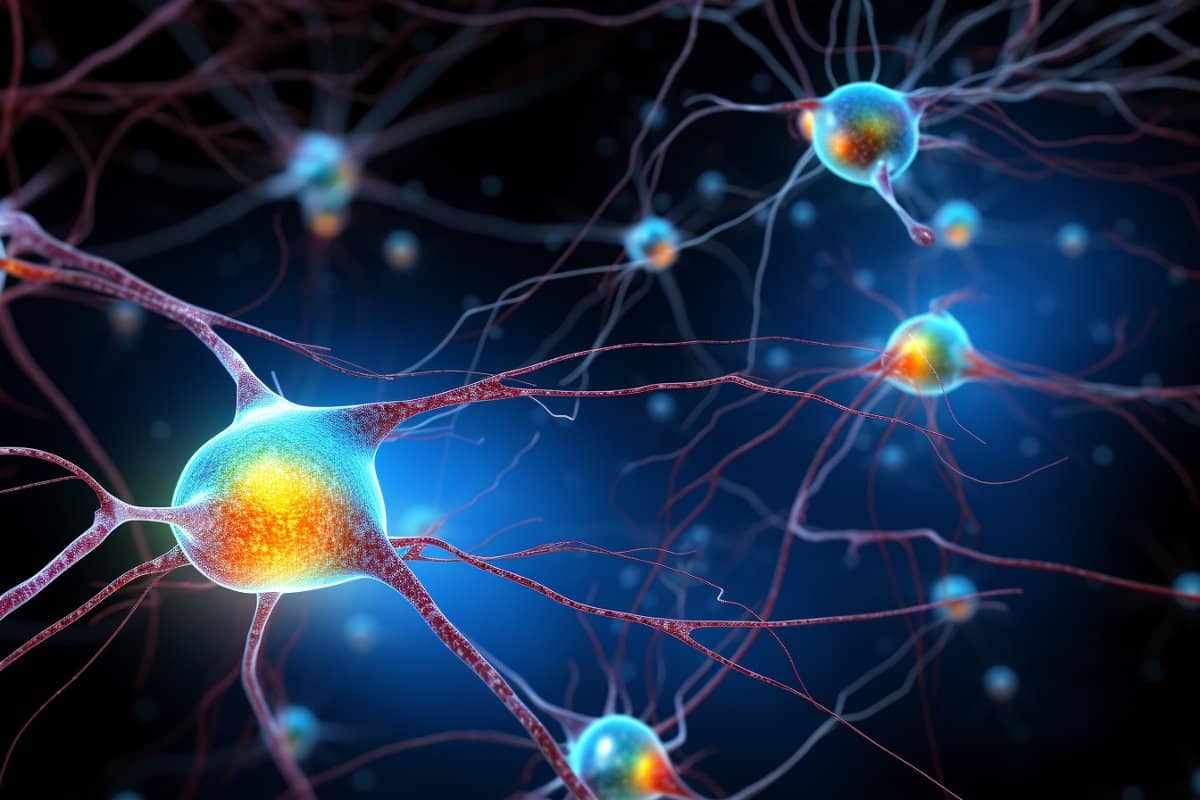Summary: Researchers made a breakthrough discovery on how saturated fatty acids in the brain contribute to memory consolidation. The team have mapped out the molecular processes and identified critical genes, such as PLA1 and STXBP1, that regulate the formation of these fatty acids during neuronal communication, offering new insights into potential treatments for neurodegenerative diseases.
By experimenting with mouse models, the researchers observed a direct correlation between levels of saturated fatty acids and memory function, highlighting the essential role of these compounds in cognitive health.
This work, a collaboration among several prestigious institutions, not only deepens our understanding of memory mechanisms but also opens the door to innovative therapeutic strategies for conditions like Alzheimer’s disease.
Key Facts:
- The study reveals the enzyme Phospholipase A1 (PLA1) and protein STXBP1 as pivotal in creating saturated fatty acids crucial for memory encoding in the brain.
- Mouse models lacking the PLA1 gene showed significant cognitive decline and lower levels of saturated fatty acids, underscoring their importance in memory acquisition.
- The research suggests potential treatments targeting this pathway could combat neurodegenerative diseases, marking a significant advancement in memory-related disorders’ management.
Source: University of Queensland
Researchers at the University of Queensland have revealed the crucial role of saturated fatty acids in the brain’s consolidation of memories.
Dr Isaac Akefe from UQ’s Queensland Brain Institute has uncovered the molecular mechanism and identified the genes underlying the memory creation process, opening the door to a potential treatment for neurodegenerative disorders.
“We’ve shown previously that levels of saturated fatty acids increase in the brain during neuronal communication, but we didn’t know what was causing these changes,” Dr Akefe said.

“Now for the first time, we’ve identified alterations in the brain’s fatty acid landscape when the neurons encode a memory.
“An enzyme called Phospholipase A1 (PLA1) interacts with another protein at the synapse called STXBP1 to form saturated fatty acids.”
The brain is the body’s fattiest organ, with fatty compounds called lipids making up 60% of its weight. Fatty acids are the building blocks of a class of lipids called phospholipids.
The work done in Professor Frederic Meunier’s laboratory has shown that STXBP1 controls the targeting of the PLA1 enzyme, coordinating the release of fatty acids and directing communication at the synapses in the brain.
“Human mutations in the PLA1 and the STXBP1 genes reduce free fatty acid levels and promote neurological disorders,” Professor Meunier said.
“To determine the importance of free fatty acids in memory formation, we used mouse models where the PLA1 gene is removed.
“We tracked the onset and progression of neurological and cognitive decline throughout their lives.
“We saw that even before their memories became impaired, their saturated free fatty acid levels were significantly lower than control mice.
“This indicates that this PLA1 enzyme, and the fatty acids it releases, play a key role in memory acquisition.”
The research has important implications for understanding of how memories are formed.
“Our findings indicate that manipulating this memory acquisition pathway has exciting potential as a treatment for neurodegenerative diseases, such as Alzheimer’s,” Professor Meunier said.
The research team acknowledges the contributions of PhD candidates Saber Abd Elkader from the Australian Institute for Bioengineering and Nanotechnology, and Benjamin Matthews from the Queensland Brain Institute.
This is a collaborative study with the University of New South Wales, University of Strasbourg, University of Bordeaux, The Scripp Research Institute and the Baylor College of Medicine.
About this memory research news
Author: Elaine Pye
Source: University of Queensland
Contact: Elaine Pye – University of Queensland
Image: The image is credited to Neuroscience News
Original Research: Open access.
“The DDHD2-STXBP1 interaction mediates long-term memory via generation of saturated free fatty acids” by Fred Meunier et al. EMBO Journal
Abstract
The DDHD2-STXBP1 interaction mediates long-term memory via generation of saturated free fatty acids
The phospholipid and free fatty acid (FFA) composition of neuronal membranes plays a crucial role in learning and memory, but the mechanisms through which neuronal activity affects the brain’s lipid landscape remain largely unexplored.
The levels of saturated FFAs, particularly of myristic acid (C14:0), strongly increase during neuronal stimulation and memory acquisition, suggesting the involvement of phospholipase A1 (PLA1) activity in synaptic plasticity.
Here, we show that genetic ablation of the PLA1 isoform DDHD2 in mice dramatically reduces saturated FFA responses to memory acquisition across the brain.
Furthermore, DDHD2 loss also decreases memory performance in reward-based learning and spatial memory models prior to the development of neuromuscular deficits that mirror human spastic paraplegia. Via pulldown-mass spectrometry analyses, we find that DDHD2 binds to the key synaptic protein STXBP1.
Using STXBP1/2 knockout neurosecretory cells and a haploinsufficient STXBP1+/− mouse model of human early infantile encephalopathy associated with intellectual disability and motor dysfunction, we show that STXBP1 controls targeting of DDHD2 to the plasma membrane and generation of saturated FFAs in the brain.
These findings suggest key roles for DDHD2 and STXBP1 in lipid metabolism and in the processes of synaptic plasticity, learning, and memory.






